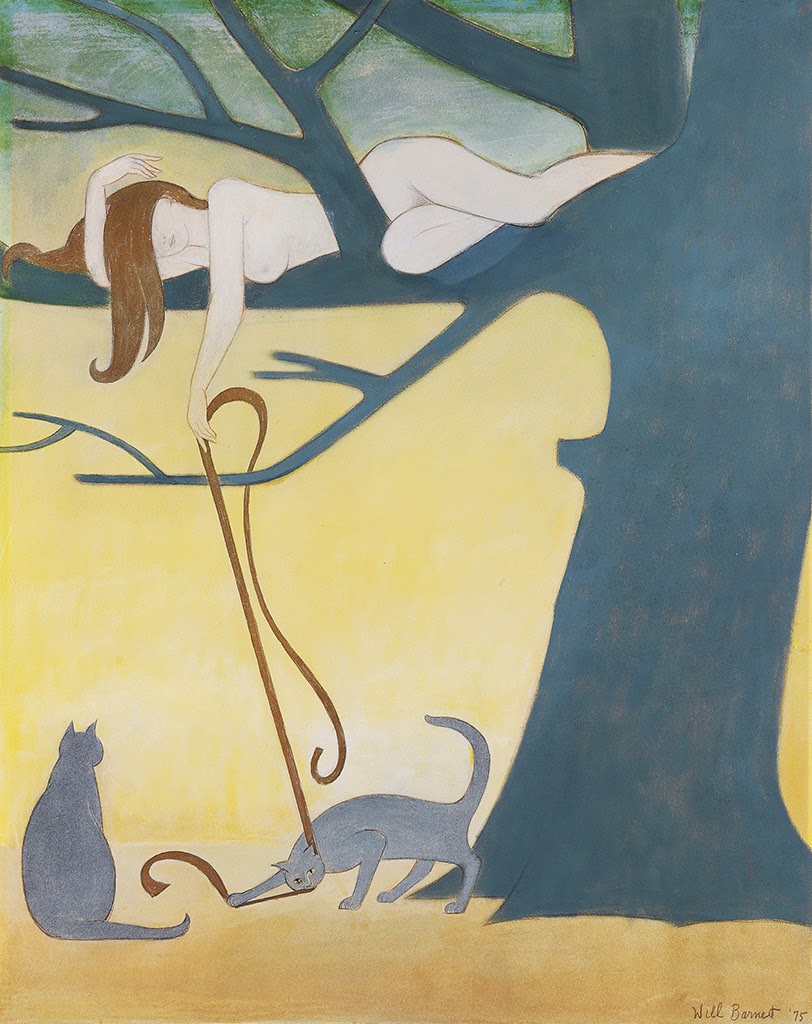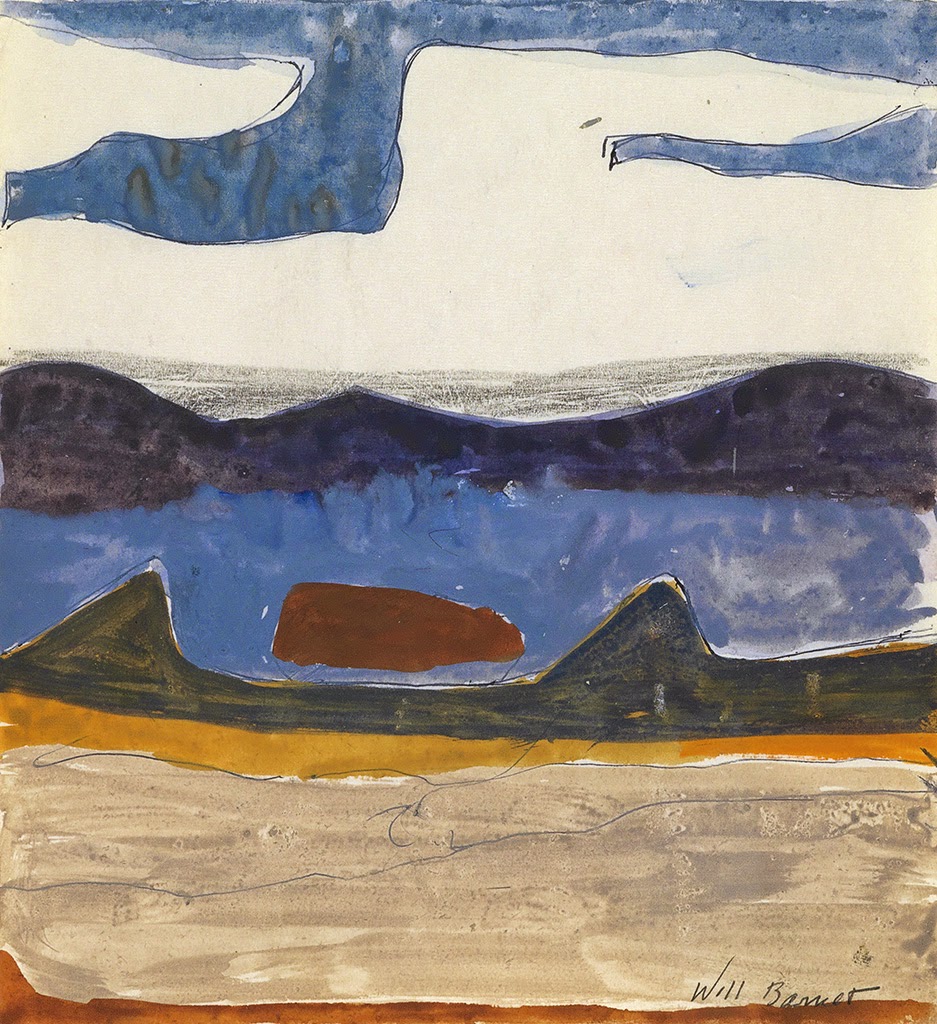 |
| Lot 232, Barnet's watercolor and oil, Play, differs from the later print. |
Barnet (1911-2012) was born in Massachusetts and studied at the School of the Museum of Fine Arts, Boston before coming to New York in 1931. He started out in a Social Realist style and worked for the graphic arts division of the WPA's Federal Art Project in New York, producing lithographs and etchings of factory workers, farm laborers and urban dwellers. By the mid 1940s, Barnet developed an abstract style, which reached its zenith in the mid 1950s. He was the key artist in the Indian Space Painting movement, which traced its sources to semi-abstract Native American art and paralleled the work of New York Abstract Expressionist artists such as Jackson Pollock, Willem de Kooning and Robert Motherwell.
 |
| Lot 230: Barnet's Father and Parrot, oil on canvas, 1948, is an example of his abstract work. |
Barnet's flirtation with abstract art waned by the early 1960s and he turned to the style for which he is best known today: colorful figurative work with poetic, symbolist and often enigmatic subjects such as women at rest, women with domesticated animals like cats, parrots, dogs and doves, and women posed in solitary, seemingly pensive and melancholic states of waiting. His mature style, seen in works like Play, displays the influence of Renaissance painting, traditional Japanese color woodcuts and American Pop Art. Barnet continued painting in a similar vein from the 1960s onward and was a longtime resident of The National Arts Club in New York's Gramercy Park. He died at age 101 after a prolific and successful career.
 |
| Lot 231: Barnet's Abstract Landscape, watercolor, gouache and pencil on paper. |
Barnet's works have entered virtually every major public collection in the United States, including, the National Gallery of Art, Washington, DC, the Metropolitan Museum of Art, New York, the Whitney Museum of American Art, New York, the Museum of Modern Art, New York, the Museum of Fine Arts, Boston, the Philadelphia Museum of Art and the Jewish Museum, New York. He has been the subject of more than 80 solo exhibitions throughout the country.
Play was developed into a color lithograph by Barnet in 1975 and printed in an edition of 150. The color lithograph does differ from the current watercolor: In the print the figure of the woman in the tree is clothed and the background is a gradated, color rainbow pattern.